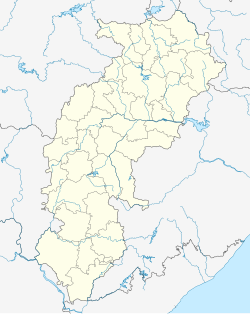This article needs additional citations for verification .(February 2024) |
| Ashtabhuji Temple | |
|---|---|
 | |
| Religion | |
| Affiliation | Hinduism |
| District | Janjgir-Champa district |
| Deity | Goddess Ashtabhuji (Saraswati and Durga) |
| Festivals | Navratri |
| Location | |
| Location | Adbhar |
| State | Chhattisgarh |
| Country | India |
| Geographic coordinates | 21°57′05″N83°01′32″E / 21.951415°N 83.02549°E |
| Architecture | |
| Type | Hindu Shaiva temple architecture (Nagara Style) |
| Creator | Gupta dynasty |
| Completed | Gupta Empire, renovated by Archaeological Survey of India |
| Specifications | |
| Temple(s) | 1 |
| Monument(s) | several |
| Inscriptions | tough Nagari languages and Sanskrit |
| Elevation | 245 m (804 ft) |
Ashtabhuji Temple is a Hindu Shaivist temple located in Adbhar, Janjgir-Champa district, Chhattisgarh, India. [1]
